This article was co-authored by Tu Anh Vu, DMD. Dr. Tu Anh Vu is a board certified dentist who runs her private practice, Tu's Dental, in Brooklyn, New York. Dr. Vu helps adults and kids of all ages get over their anxiety with dental phobia. Dr. Vu has conducted research related to finding the cure for Kaposi Sarcoma cancer and has presented her research at the Hinman Meeting in Memphis. She received her undergraduate degree from Bryn Mawr College and a DMD from the University of Pennsylvania School of Dental Medicine.
There are 23 references cited in this article, which can be found at the bottom of the page.
This article has been viewed 69,792 times.
The gums are delicate tissues and can be very sensitive to temperature, inflammation, and infections. Common signs of gum disease are bleeding, or tender and sore gums. Gum problems can range from the relatively minor to indications of more serious problems for both oral and overall health. Learn how to relieve gum pain and deal with more serious problems so you can alleviate any discomfort.
Steps
Reducing Gum Pain Using Proven Methods
-
1Use an oral gel. Oral antiseptic gels may help relieve gum pain. Many of these gels contain a local anesthetic that can relieve the pain. You can also try baby teething gels, such as Orajel, or a gel that contains benzocaine.[1]
- Use these gels sparingly and never use over the recommended dose.
- Refrain from using benzocaine in young children without a doctor’s guidance.
- These gels are not antimicrobial and won’t affect any infection.
- Using an alcohol-free mouthwash may also soothe your gums.
-
2Take over-the-counter pain medicine. If you have gum pain, try over-the-counter pain medicine such as acetaminophen (Tylenol) or ibuprofen (like Advil).[2]
- Follow your dentist's instructions with how often to take the pain medicine. If you are not under a dentist's care, read the directions of the medication carefully. Avoid taking more than the recommended dosage each day.
- If you still feel pain after two to three days, contact your dentist.
- Don't dissolve an aspirin or other pain reliever on the painful gum area.
Advertisement -
3Get prescription medication. If you have serious gum problems, or an infection or abscessed tooth, your doctor may prescribe medication to help treat the pain along with the underlying condition.
- Your doctor may prescribe oral antibiotics or prescription strength gels, which are a mixture of antibiotics, anti-inflammatory substances and also vitamins such as vitamin A. See your doctor to determine the best treatment.
Using Home Remedies To Relieve Gum Pain
-
1Use ice cubes or ice packs. If you are experiencing gum pain, try some ice therapy. You can place an ice cube or crushed ice on the gums as long as your teeth and gums aren’t sensitive to cold.[3]
- Ice helps reduce inflammation and numbs the area to relieve pain.[4]
- You can also crush some ice and place it into a balloon or the cut-off finger of a non-latex glove. Tie off one end and place the compress on the sore gums.
- Cool foods can help relieve gum pain. The cold reduces swelling and can help numb the pain. Place slices of cool cucumber or raw potato on the gum to relieve the pain. You can also try to freeze slices of apples, bananas, mango, guava, grapes, or pineapple and place the slices on the sore gums.
-
2Make a mouth rinse. Making mouth rinses out of various products may help promote healing and help relieve gum pain. You can use these rinses three to four times a day.
- Dissolve ½ teaspoon of sea salt in four ounces of warm water. Hold the solution in your mouth over the painful gum for 30 to 60 seconds. Spit it out and repeat two or three more times. Rinse with warm water. Make sure you do not swallow the saltwater.
- A solution made with hydrogen peroxide may help swollen and sore gums. Mix equal parts of water and a 3% hydrogen peroxide solution. Swish in the mouth for 15 to 30 seconds.[5] Do not swallow this solution.
- Rinse your gums with apple cider vinegar. Mix ¼ cup of warm water and apple cider vinegar. Hold the rinse in your mouth over the painful gum for 30 to 60 seconds. Spit it out and repeat two to three more times. Rinse with warm water. You can also soak a cotton ball in apple cider vinegar and leave it on your sore gum for 10 minutes. Do not swallow the water-vinegar rinse.
- Sage is a folk remedy used to treat inflammation. Boiling it into a tea and swishing it around your mouth may help reduce pain and inflammation of your gums.[6] To make sage tea, start with a handful of fresh and washed sage leaves or one heaping teaspoon of dried sage. Add the sage to eight ounces of boiling water. Let the water cool. Allow the liquid to set around the painful gum for 20 to 30 seconds every time you gargle.
- Other herbal remedies include wormwood, chamomile, and aloe. Speak with your doctor before using any natural treatments, as they can have negative interactions with other medications you may be taking or certain conditions.
-
3Massage your gums. Massaging your gums may provide some relief. To massage your gums, use a clean finger and gently make a circular motion on top of the sore gum and as much at the sides as you can. Rub clockwise for 15 rotations, then counter-clockwise for an additional 15 rotations. Do not massage vigorously or press too hard.[7]
- Repeat the massage at least three to four times daily.
- Massaging your gums can help with sore gums from wisdom teeth. A gum massage can help erupting wisdom teeth ease through the gums while helping to relieve some of the pain.
-
4Try a heat press. Heat packs rarely work for gum pain, but sometimes they do work for some people. If you find that heat may be helpful, you can make a heat press and apply it to your sore gums three to four times a day.[8]
- Try using a small piece of cloth soaked with warm water. You can also soak the cloth in one of the teas listed for relief.
- You can also use a warm tea bag. Soak an anti-inflammatory herbal tea bag in warm water. Place the tea bag over the gums and let it stay there for about five minutes. Repeat two to three times a day.[9] Try using clove tea, goldenseal tea, echinacea tea, sage tea, and green or black tea.[10]
-
5Remove irritants. Sometimes, gum pain is caused by food pieces trapped between your teeth. To help relieve gum pain from trapped food pieces, use a piece of floss to clean near the gum and remove the trapped particle.[11]
-
6Add essential oils to your gum massage. There are a number of different oils that can provide relief for gum pain. Most of the oils listed are both anti-inflammatory and antimicrobial oils, so they can reduce swelling, inflammation, and help prevent infection. You can massage your gums up to four or five times a day with essential oils to help relieve pain and swelling. Clove oil has been found to be the most effective essential oil in relieving gum pain. You can rub it directly onto your gum.[12] There are other essential oils that are helpful for gum pain. Try massaging your gums with the addition of a few drops of the following oils:[13] [14]
- Warm olive oil
- Warm vanilla extract
- Tea tree oil
- Clove oil
- Peppermint oil
- Cinnamon oil
- Sage oil
- Goldenseal oil
- Coconut Oil
-
7Try onion, garlic, or ginger. Garlic, ginger, and onions are anti-inflammatory agents that help reduce gum inflammation.[15] [16] [17] These foods also are known to relieve pain. Using them on sore gums or making them into a paste can help reduce pain.
- Cut a piece of onion or garlic and place it directly onto the tooth above the painful gums. Gently bite to release the juice. Afterwards, you may want to try a mint or two or brush your teeth.[18]
- Cut a slice of fresh ginger and place it on the painful gums. You can gently bite down on the ginger as well. Be aware that the taste may be strong and spicy.
-
8Make a spice paste. Turmeric and asafetida are used as cooking spices in Indian foods; however, turmeric is known for its medicinal properties, such as being antimicrobial and an anti-inflammatory.[19] It comes as a powdered resin or as a lump of resin and can be found in Indian stores and markets.
- Mix one teaspoon of turmeric with ½ teaspoon of salt and ½ teaspoon of mustard oil. Rub this paste onto your gums twice a day to help with gum pain.
- Take ¼ teaspoon of the powder and mix it with enough fresh lemon juice to make a paste. Apply the paste directly onto the sore gums. Leave the paste on for around five minutes. Repeat two to three times daily. Notice if your teeth develop a stain or discoloration that does not go away after brushing — you will want to stop using the paste if this occurs.
- It has a bitter taste and an unpleasant odor that is masked somewhat by the lemon juice. However, you may find it useful to rinse well after using the paste.
Maintaining Proper Dental Hygiene
-
1Brush your teeth. Make sure to brush your teeth at least twice a day. Use a soft toothbrush. Teeth and gums can be damaged by brushing too hard or using toothbrushes with hard bristles. When brushing, use a soft, gentle back and forth stroke.[20]
- In addition, using an old toothbrush can also harm your teeth. The bristles of new toothbrushes are rounded; after a few months those tips become sharp and can do more harm than good.
- Also make sure that you brush your tongue.
- Leave the toothpaste in your mouth without rinsing. Spit out the extra foam, but don’t rinse your mouth out with water. You want to give the minerals some time to be absorbed onto your teeth.
-
2Floss daily. Take time to floss daily. Start by pulling off about 18 inches of floss. Wind most of the floss around the middle finger of one hand and the rest around the middle finger of the other hand. Hold on to the floss firmly between your thumb and your forefinger.[21]
- Gently guide the floss between all your teeth using a gentle back and forth motion. Curve the floss around the bottom of each tooth.
- Once the floss is between the teeth, use a gentle up-and-down motion to rub each side of each tooth.
- When you are done with one tooth, unwind more floss and move on to the next tooth.
- Pay special attention to the wisdom teeth once they have erupted.
-
3Rinse your mouth. After eating, you should consider some kind of mouth rinse. Rinsing your mouth helps to remove food and other particles. These particles can cause plaque, tooth decay, tartar, and lead to gum disease. Take a moment after eating to rinse your mouth.[22]
- You can rinse with water, a mouthwash, or a homemade rinse made with things like hydrogen peroxide.
-
4See your dentist regularly. Make sure you see a dentist regularly. Your dentist can give your teeth a professional cleaning one to two times a year. Most insurance will cover routine cleanings.
- Not only does this help keep your teeth clean, but it can help your dentist spot any tooth or gum problems before they get too bad.
-
5Avoid using tobacco products. The use of tobacco products increases the risk of gum disease. This includes cigarettes, cigars, and chewing tobacco. You should avoid all forms of tobacco. If you currently smoke, you should stop smoking to lower your risk of gum disease.[23]
- Smoking also stains your teeth and causes bad breath.[24]
-
6Get enough vitamin C and calcium. Make certain you are getting enough Vitamin C and calcium. A vitamin C deficiency can cause swollen, bleeding gums and even loosening or loss of teeth.[25]
- Good food sources of Vitamin C include citrus fruits and juices, such as oranges and grapefruits, kiwi, bell peppers, papaya, strawberries, broccoli, and cantaloupe.
- Good food sources of calcium are dairy products like milk, cheese, yogurt, and ice cream, sardines, calcium fortified soy milk, soy products, and leafy green vegetables.
Recognizing The Causes For Gum Pain
-
1Determine if you have a canker sore. Canker sores are ulcers in the mouth that can cause persistent pain or pain when eating.[26] Canker sores in the mouth can cause gum pain if they are located on the gums. These mouth ulcers are easily identified. They are usually oval with red or white centers.[27]
- Doctors don't know exactly what causes canker sores. They are sometimes caused by injury in the mouth or by acidic foods. They can also appear when your immune system drops and can be the first sign of a lower immunity.
- Canker sores generally heal on their own in a week or two.
-
2Check for incorrect brushing and flossing. If you are brushing or flossing the wrong way, you can cause gum pain. Brushing too vigorously or flossing with too much force may cause gum irritation, pain, and bleeding.[28]
- Choose soft bristle toothbrushes instead of harder ones.
- Use a circular motion instead of back and forth. Back and forth brushing can irritate your gums. It also retracts your gums, exposing the root, which leads to a high tooth sensitivity.
-
3Look for teething. Gum pain may be due to teething, especially in small children. Adults may feel gum pain due to teething if a tooth has not properly broken through the gum. The appearance of wisdom teeth also can cause gum pain in adults.
-
4Determine if you have gum disease. Gum disease is one of the most common causes for gum pain. Gum disease starts as gingivitis and can be treated with proper oral care.[31] Periodontal disease is the more serious form, which can lead to the loss of teeth. Symptoms of gum disease include:[32]
- Red, swollen, or painful gums
- Bad breath
- Unpleasant taste in the mouth
- Receding gums, which make your teeth look bigger
- Bleeding gums during and after brushing
- Pockets between teeth and gums
- Teeth that feel weak or unstable — you may be able to wiggle them with your tongue
-
5Decide if you have a small gum injury. Sometimes, sharp objects, rough food, or hot food may cause a minor gum injury. This can lead to gum pain.
- These minor injuries generally heal on their own within a few days to a week.
-
6Determine if you have oral cancer. Oral cancer is another reason why you may experience gum pain. Oral cancer can lead to sores in the mouth that won’t heal and change in color and volume, along with pain in the mouth.[33]
- Other symptoms of oral cancer include lumps in the cheek, neck, or under your jaw; difficulty swallowing or chewing; difficulty moving the jaw or tongue; numbness in the tongue and mouth; voice changes; and a persistent sore throat or feeling that something is stuck in your throat.
-
7See your dentist. If you experience any gum pain that won’t go away, sores that won’t heal, or any other abnormal symptoms, visit your dentist. Even if you believe you just have gingivitis, a dental check up once or twice a year can help reduce your risk of gum disease.[34]
- If you have any of the symptoms of oral cancer or severe gum disease, or other symptoms like a fever or signs of an infection, visit your dentist immediately.
Expert Q&A
-
QuestionHow do I get rid of pain in my gums?
 Tu Anh Vu, DMDDr. Tu Anh Vu is a board certified dentist who runs her private practice, Tu's Dental, in Brooklyn, New York. Dr. Vu helps adults and kids of all ages get over their anxiety with dental phobia. Dr. Vu has conducted research related to finding the cure for Kaposi Sarcoma cancer and has presented her research at the Hinman Meeting in Memphis. She received her undergraduate degree from Bryn Mawr College and a DMD from the University of Pennsylvania School of Dental Medicine.
Tu Anh Vu, DMDDr. Tu Anh Vu is a board certified dentist who runs her private practice, Tu's Dental, in Brooklyn, New York. Dr. Vu helps adults and kids of all ages get over their anxiety with dental phobia. Dr. Vu has conducted research related to finding the cure for Kaposi Sarcoma cancer and has presented her research at the Hinman Meeting in Memphis. She received her undergraduate degree from Bryn Mawr College and a DMD from the University of Pennsylvania School of Dental Medicine.
Board Certified Dentist If you have gum pain, you either have a cold sore or some kind of gum disease. Cold sores are pretty normal, especially during the colder months, so they aren't really big deal. If you have gum disease though, it's time to see a dentist to have them take a look. This is why it's so important to see a dentist every 6 months, since they'll catch problems like these before they get out of hand.
If you have gum pain, you either have a cold sore or some kind of gum disease. Cold sores are pretty normal, especially during the colder months, so they aren't really big deal. If you have gum disease though, it's time to see a dentist to have them take a look. This is why it's so important to see a dentist every 6 months, since they'll catch problems like these before they get out of hand. -
QuestionHow do I get rid of pain in my gums?
 Tu Anh Vu, DMDDr. Tu Anh Vu is a board certified dentist who runs her private practice, Tu's Dental, in Brooklyn, New York. Dr. Vu helps adults and kids of all ages get over their anxiety with dental phobia. Dr. Vu has conducted research related to finding the cure for Kaposi Sarcoma cancer and has presented her research at the Hinman Meeting in Memphis. She received her undergraduate degree from Bryn Mawr College and a DMD from the University of Pennsylvania School of Dental Medicine.
Tu Anh Vu, DMDDr. Tu Anh Vu is a board certified dentist who runs her private practice, Tu's Dental, in Brooklyn, New York. Dr. Vu helps adults and kids of all ages get over their anxiety with dental phobia. Dr. Vu has conducted research related to finding the cure for Kaposi Sarcoma cancer and has presented her research at the Hinman Meeting in Memphis. She received her undergraduate degree from Bryn Mawr College and a DMD from the University of Pennsylvania School of Dental Medicine.
Board Certified Dentist To best get rid of gum pain, you will have to determine what is causing it. Gum pain can be a result of many problems, like a cold/canker sore, gingivitis, food stuck in the gums, or something else. To get a proper diagnosis, you should visit a dental professional. In the meantime, you can take over-the-counter pain medication to manage any pain.
To best get rid of gum pain, you will have to determine what is causing it. Gum pain can be a result of many problems, like a cold/canker sore, gingivitis, food stuck in the gums, or something else. To get a proper diagnosis, you should visit a dental professional. In the meantime, you can take over-the-counter pain medication to manage any pain.
References
- ↑ http://www.mayoclinic.org/first-aid/first-aid-toothache/basics/art-20056628
- ↑ Tu Anh Vu, DMD. Board Certified Dentist. Expert Interview. 20 May 2020.
- ↑ http://www.mayoclinic.org/diseases-conditions/cancer/in-depth/mouth-sores/art-20045486?pg=2
- ↑ https://www.urmc.rochester.edu/Encyclopedia/Content.aspx?ContentTypeID=85&ContentID=P00918
- ↑ https://my.clevelandclinic.org/health/diseases/10957-toothache
- ↑ http://www.herbwisdom.com/herb-sage.html
- ↑ http://www.mayoclinic.org/healthy-lifestyle/infant-and-toddler-health/in-depth/teething/art-20046378
- ↑ https://www.nlm.nih.gov/medlineplus/ency/article/000606.htm
- ↑ http://learningherbs.com/remedies-recipes/toothache-remedy/
- ↑ http://www.herbwisdom.com/herb-sage.html
- ↑ http://www.mayoclinic.org/first-aid/first-aid-toothache/basics/art-20056628
- ↑ http://www.mayoclinic.org/first-aid/first-aid-toothache/basics/art-20056628
- ↑ http://www.herbwisdom.com/herb-sage.html
- ↑ http://www.mayoclinic.org/first-aid/first-aid-toothache/basics/art-20056628
- ↑ http://www.ncbi.nlm.nih.gov/pubmed/23583806
- ↑ http://www.ncbi.nlm.nih.gov/pubmed/2246074
- ↑ http://www.ncbi.nlm.nih.gov/pubmed/16117603
- ↑ http://www.healthguidance.org/entry/12593/1/Natural-Gum-Pain-Relief.html
- ↑ https://www.ncbi.nlm.nih.gov/pmc/articles/PMC4375173/
- ↑ https://www.nia.nih.gov/health/taking-care-your-teeth-and-mouth
- ↑ http://www.nhs.uk/Livewell/dentalhealth/Pages/Teethcleaningguide.aspx
- ↑ https://www.nia.nih.gov/health/taking-care-your-teeth-and-mouth
- ↑ http://www.nhs.uk/Conditions/Gum-disease/Pages/Treatment.aspx
- ↑ https://www.dentalhealth.org/tell-me-about/topic/sundry/smoking-and-oral-health
- ↑ https://ods.od.nih.gov/factsheets/VitaminC-Consumer/
- ↑ Tu Anh Vu, DMD. Board Certified Dentist. Expert Interview. 20 May 2020.
- ↑ http://www.mayoclinic.org/diseases-conditions/canker-sore/basics/definition/con-20021262
- ↑ http://www.webmd.com/oral-health/guide/gum-problem-basics-sore-swollen-and-bleeding-gums
- ↑ Tu Anh Vu, DMD. Board Certified Dentist. Expert Interview. 20 May 2020.
- ↑ https://www.nlm.nih.gov/medlineplus/ency/article/001057.htm
- ↑ Tu Anh Vu, DMD. Board Certified Dentist. Expert Interview. 20 May 2020.
- ↑ http://www.webmd.com/oral-health/guide/gum-problem-basics-sore-swollen-and-bleeding-gums
- ↑ http://www.cancercenter.com/oral-cancer/symptoms/
- ↑ Tu Anh Vu, DMD. Board Certified Dentist. Expert Interview. 20 May 2020.
About This Article
Gum pain can cause a lot of discomfort, but there are medical treatments and home remedies that will help you relieve it. Try using an alcohol-free mouthwash or antiseptic oral gel to prevent infection. You can also take over-the-counter medication, such as ibuprofen. For a home remedy, place an ice cube on the sore area to numb the pain. Alternatively, use a mouth rinse of warm, salty water. All you need to do is swish the water around your mouth for 30 to 60 seconds 3 to 4 times a day. Afterwards, wash out your mouth with water. Massaging your sore gum in a circular, clockwise motion may also help reduce discomfort. If your gum pain persists or is really painful, see your dentist for treatment. For tips from our Dental co-author on how to spot other symptoms of common gum problems, keep reading.
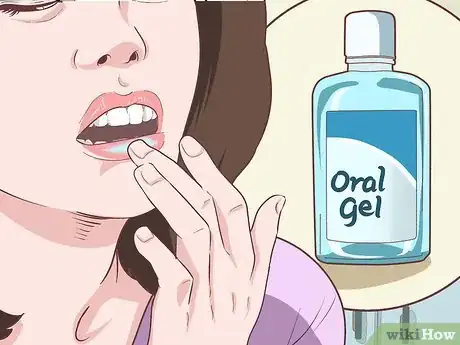
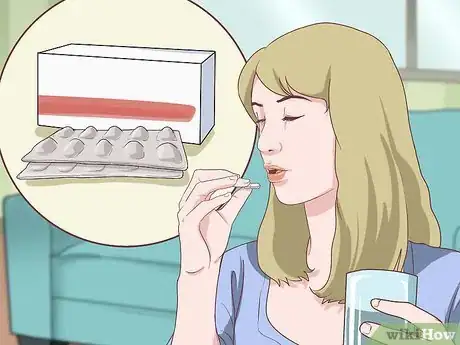

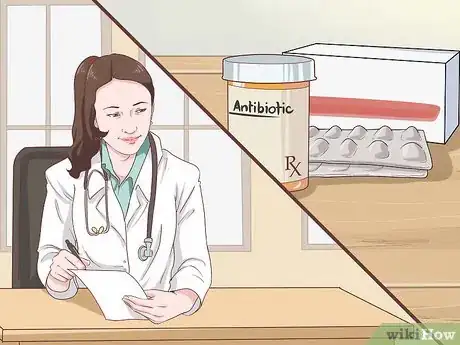
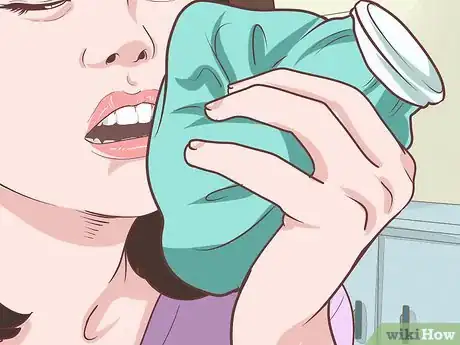
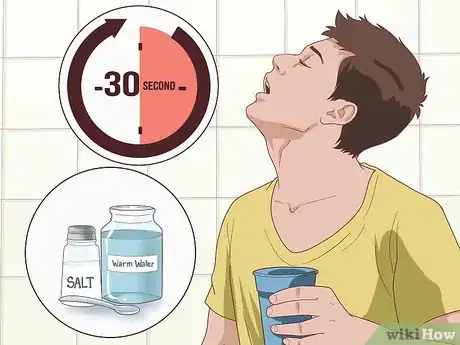

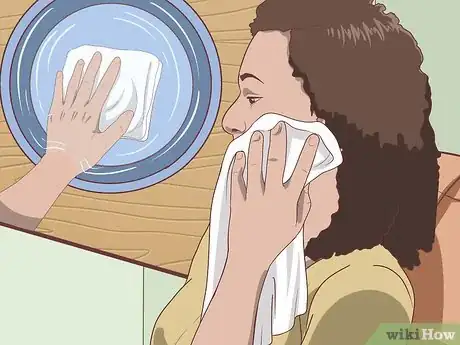
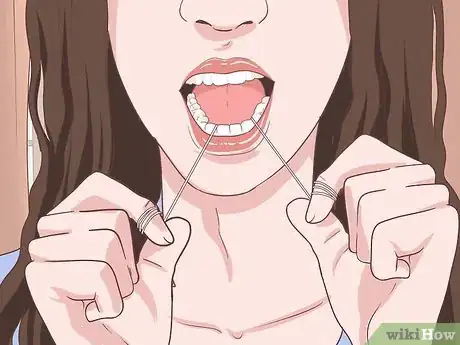
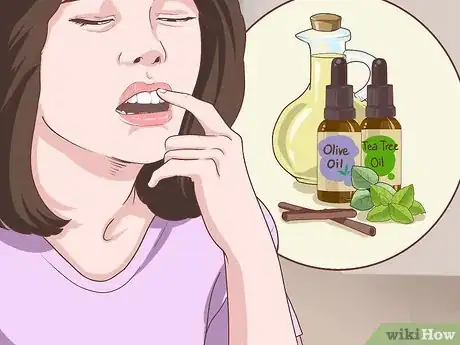
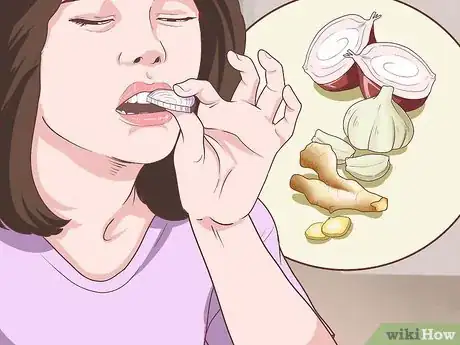
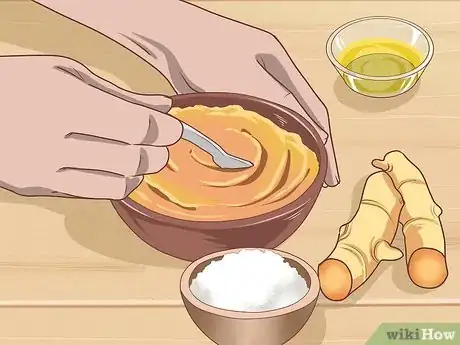
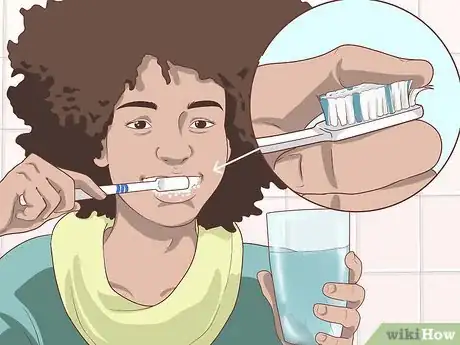
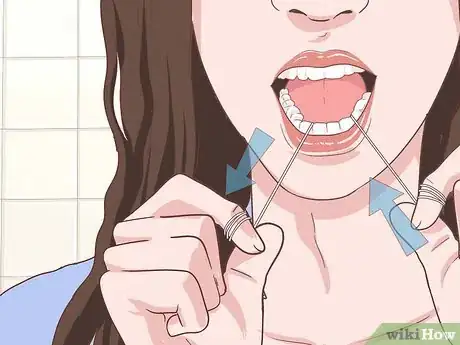
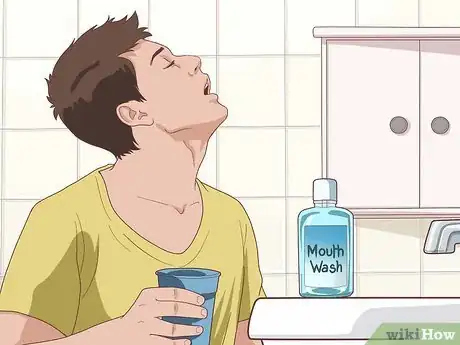

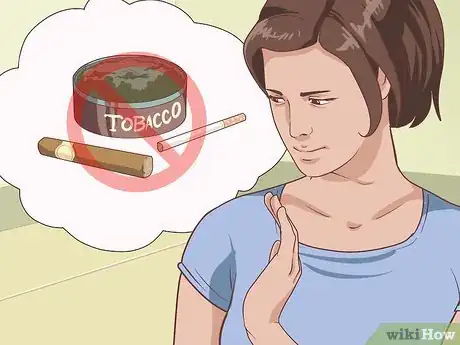

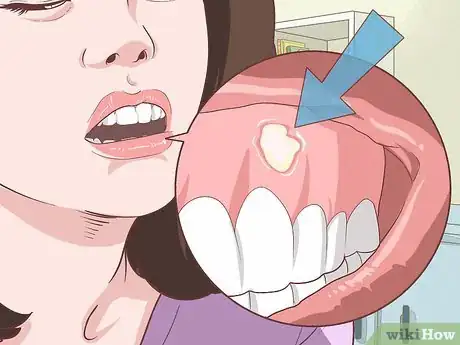
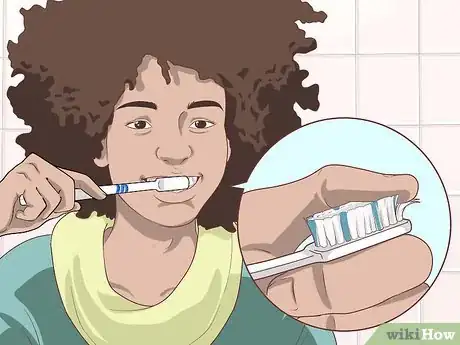
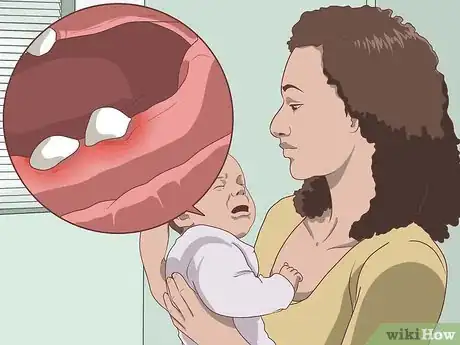
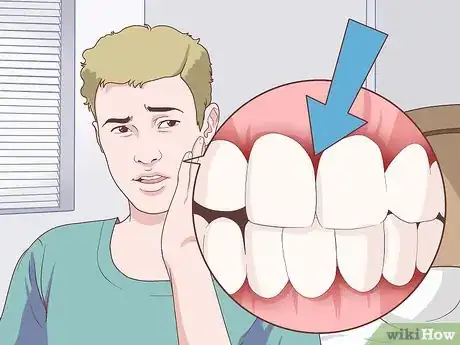
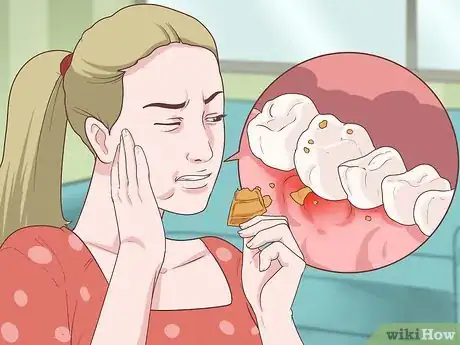
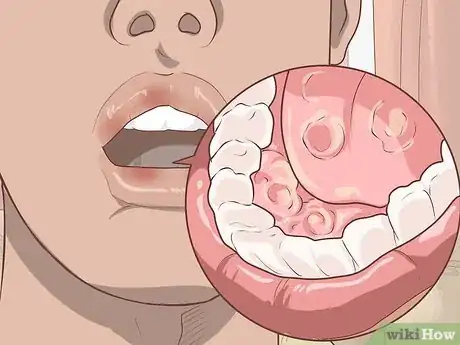
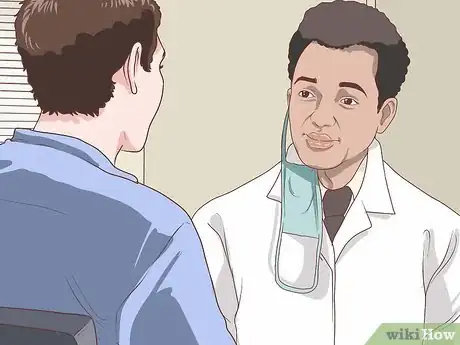

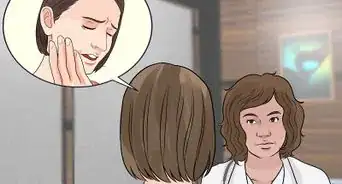

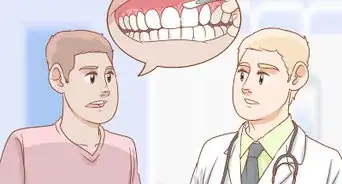
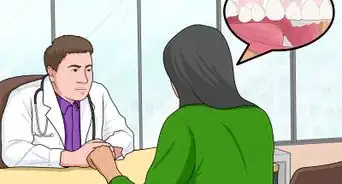
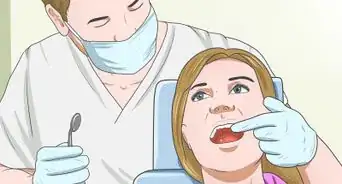
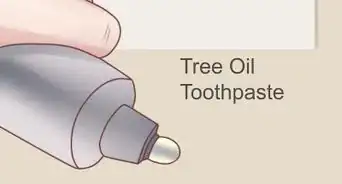


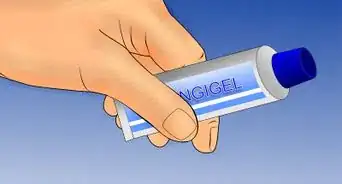
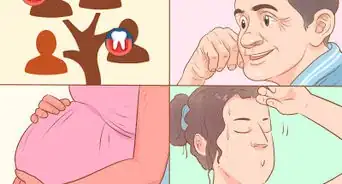
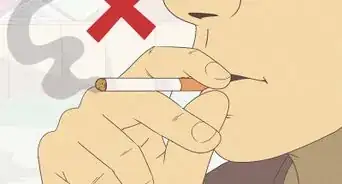
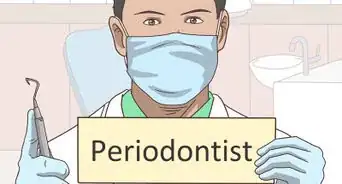
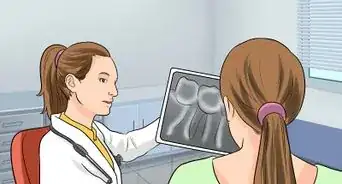









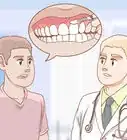



































Medical Disclaimer
The content of this article is not intended to be a substitute for professional medical advice, examination, diagnosis, or treatment. You should always contact your doctor or other qualified healthcare professional before starting, changing, or stopping any kind of health treatment.
Read More...